Unless it’s in the fireplace, in the fire pit, or incinerating a massive wooden effigy as thousands of drug-addled desert people dance about, when a man sees a fire, his job is to put the damn thing out. (This is especially true if he is a professional firefighter.)
Did you know that according to reports released by the National Fire Protection Association, home fires break out more than 42 times per hour in the United States? You did know that? No, you didn’t. Anyway. The fact is that it’s entirely likely you will, at some point in your life, be faced with a fire you have to fight before the fire department can get there. Reacting quickly and correctly can be the difference between you looking wildly heroic and ending the night with a smirk and a Scotch… and you not having a home anymore. Or a smirk.
With the right knowledge (which you can get here) and proper preparation, you’ll be ready to win the fight against fire. But what kind of fire will you be fighting? For you see, not all fires are created equal. (I’m not prejudiced or anything, it’s the truth.) Without further delay, let us now discuss a few of the best fire preventing products for your home, the most common home fires, and the proper way to put ’em out!
Fire Prevention Products
As much as possible, you want to prevent the fire from spreading even further. For you to do that, you’ll be needing these fire safety products. We’ve included items that you can bring on-the-go as well as tools you should have stocked at home.
First Alert Alexa Enabled Smoke Detector
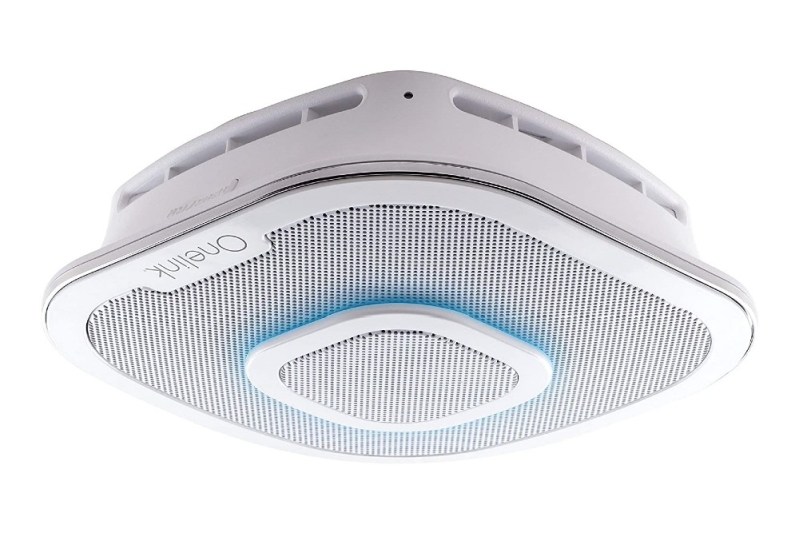
Give your household a solid upgrade with this smart fire detector by First Alert. This is not your ordinary fire detector that only beeps at the first sniff of smoke in the air. When there’s an emergency in your home, you’ll get mobile notifications. The detector can also track carbon monoxide levels and be controlled with the use of the Onelink Home app. Equipped with Amazon’s Alexa, you also get a smart home appliance and speaker. You can ask Alexa to play music or podcasts and it will comply. If you’re looking for a fire detector that can keep your home safe and sound, this one’s a great pick.
First Alert 1038789 Standard Home Fire Extinguisher
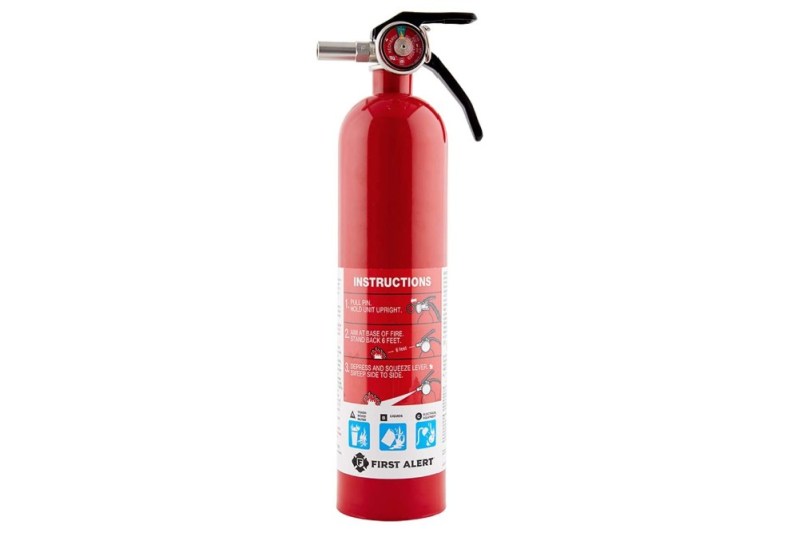
Every living space, especially one that is prone to fire, should always have a fire extinguisher readily available. The First Alert fire extinguisher is ideal for home use and is made of durable metal construction. It can effectively fight fire from wood, paper, trash, plastics, gasoline, oil, and electrical equipment. This extinguisher also has a metal pull pin with a safety seal to prevent accidental tampering. The instructions on how to use the extinguisher are also easy to read and understand.
First Alert EZ Fire Spray Portable Fire Extinguisher
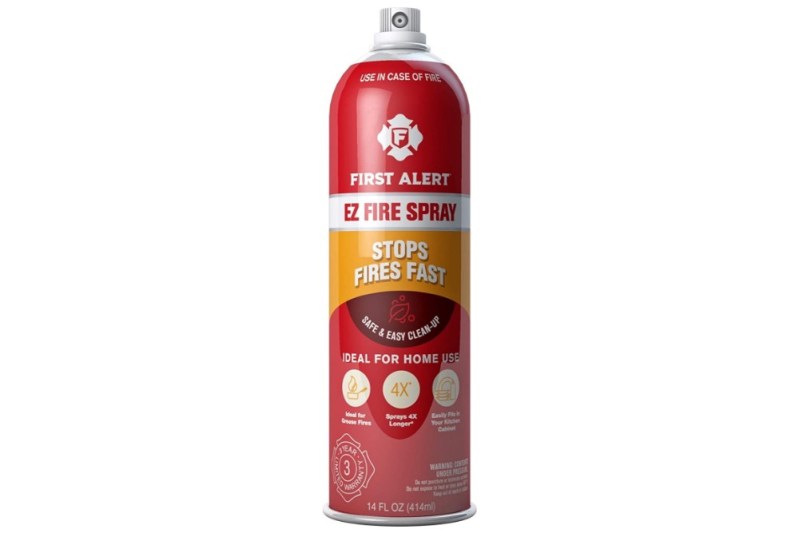
When it comes to ease of use, you can’t go wrong with this fire extinguishing aerosol spray by First Alert. Compared to a traditional fire extinguisher, this spray discharges four times longer. Although this is most ideal for home use, the lightweight aerosol spray can make it perfect to bring to different spaces like your kitchen, garage, dorm, and even boat. This extinguishing spray is effective in fighting the fire in paper, fabric, wood, grease, and electrical equipment. After using, this spray’s residue is easy and safe to clean.
Kidde KL-2S Two-Story Fire Escape Ladder
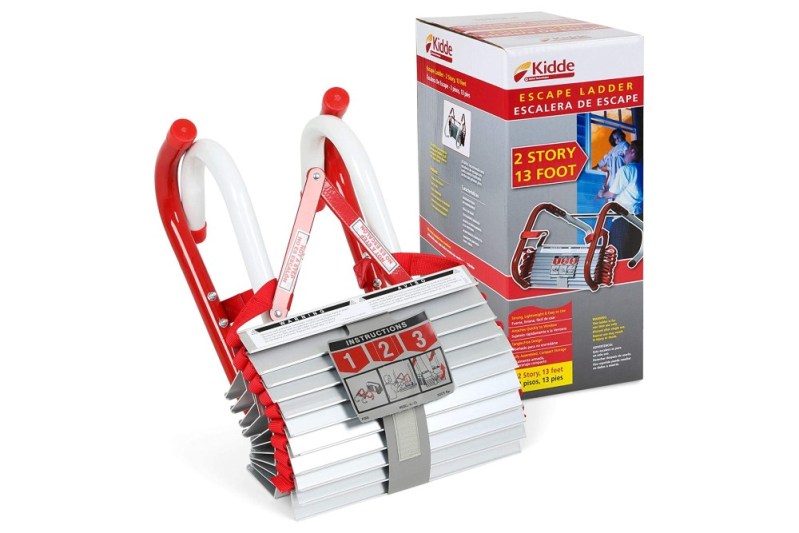
When the fire is too much to handle, the best thing to do is evacuate. To do that, you’ll be needing an escape ladder. This ladder especially made for fire escape is 13 feet long and suited for two-story use. It attaches quickly to most windows and is flame resistant. This strong ladder can hold a weight to as much as a thousand pounds and can be used to rescue those trapped in an establishment bursting in flames. The tangle-free and no-assembly required ladder makes it an optimal choice in emergency situations.
Tonyko Fiberglass Fire Blanket
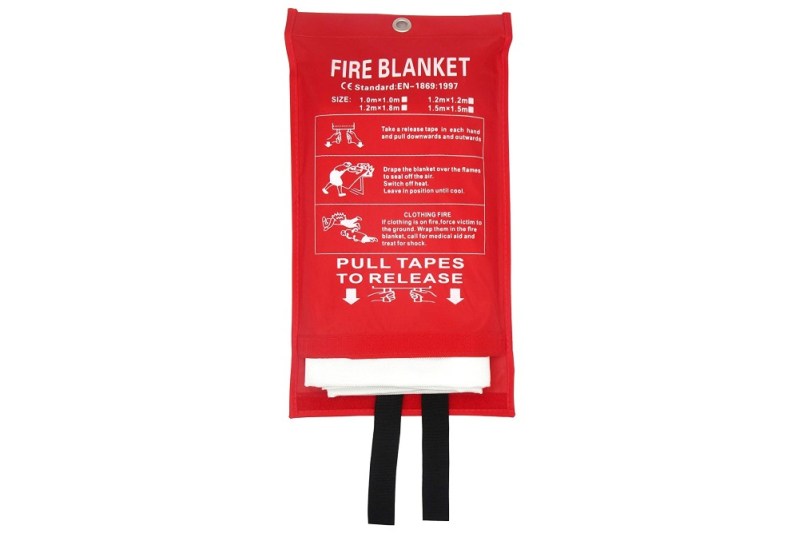
A classic way to keep the fire under control is by using a blanket. This emergency survival blanket is specially designed for putting out fires. Since this fire blanket has a portable size, you can easily bring this to your next camping trip. By draping this blanket over the flames, it can put out various types of fire such as liquid and grease fire. Unlike a conventional extinguisher, this blanket keeps the affected area tidy even after use.
Kitchen and Grease Fires
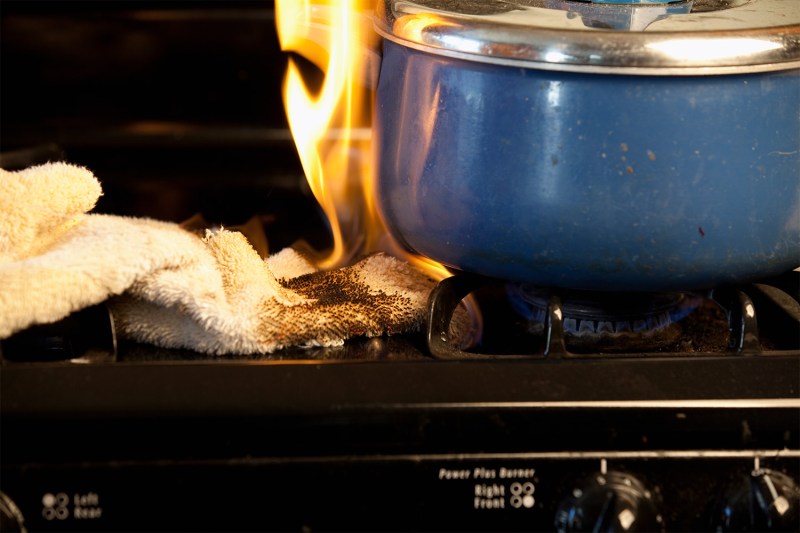
Some of the most common home fires flare-up in the kitchen; these can also be the most dangerous. Flaming grease can splash onto myriad o heat sources, highly flammable gasses may be involved, and, if silent movie-era comedy has taught us anything, you’ll be holding a tray of sharp knives when the fire breaks out. Just make sure you keep your trash away from any heat source.
Oven or Microwave Fires
The first fire safety tip is just to close the door and turn the thing off. In many cases, a closed microwave (that has of course been unplugged) or an oven with its heat switched off will suffocate and extinguish internal fires. If that doesn’t do the trick, and especially if flames are coming out of the appliance, grab a fire extinguisher and douse the entire unit. A bucket of baking soda will also work, but the chances that you have a bucket of baking soda on hand are quite low. If the interior of an oven is on fire but the flames are contained, don’t pull open the door, as that will add oxygen and make the fire grow. Try to wait it out, but watch closely for spreading, especially out the back of the unit near the wall.
Grease and Oil Fires
Hoo boy, these things are scary. Oil fires burn incredibly hot and can spread quickly with any splashing or jostling. So while it might be nice to just move a flaming pot of fire outside, don’t try it: it will be like dropping napalm on your kitchen. If at all possible, you need to smother the flames of a grease/oil fire. If the fire is in a pot, cover it with a metal lid (don’t use glass). You can also throw a fire blanket over the flames; a carpet or other thick, heavy fabric might work as well. Dry chemical fire extinguishers will also work, but for God’s sake, water will not. Water will only cause these types of fires to spread. Smothering them is, far and away, the best solution.
Electrical Fires
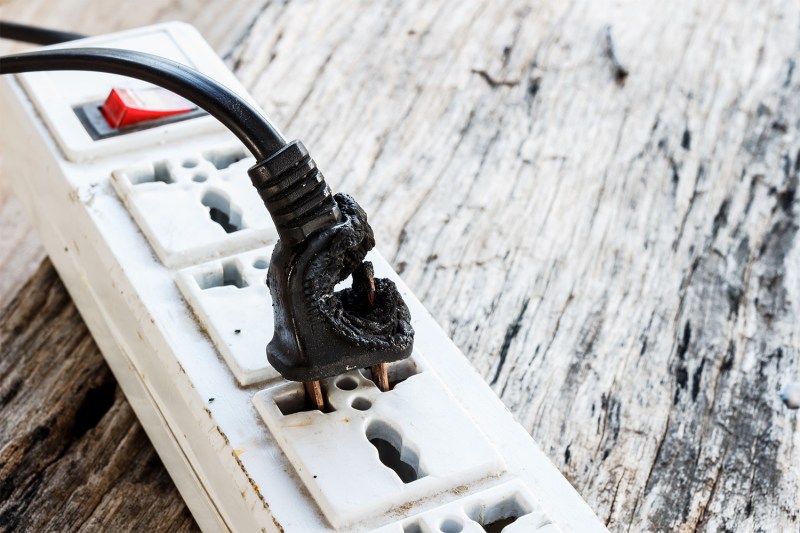
Plugging too many things into the same outlet? That’s a bad idea and how a fire starts. Using electronic devices in areas without decent air circulation? Not good. Older, worn, or exposed wiring? You’d better attend to that. Electrical fires happen quickly and unexpectedly, but usually, their causes are your own lack of attention to potential issues. In other words, if you look around your house and take steps to prevent an electrical fire, you’ll probably successfully prevent it. But, let’s say you didn’t.
Appliance Fire
So your TV/computer/blender just burst into flames, eh? Well unplug that sumbitch and soak it! Yes, when an electrical unit is disconnected from its power source, it’s totally OK to use water to fight its flames. Just make sure you use lots of water! Using a fire extinguisher? Yep, also a good idea. Unless you have a purpose-built fire blanket, don’t try to smother this type of fire: chances are, the fabric you use will burn as well.
Outlet or Wiring Fire
OK, now say there’s fire coming from the outlet itself, or from wires you can’t unplug. Pay close attention here: Do not use water! That will see the spread and growth of the conflagration. If at all possible, shut off the property’s power at once. You should know where your main breaker is, and be ready to switch it off. That may stop the fire, or at least slow its growth. Now grab that Class C fire extinguisher you keep on hand and spray at the base of those flames!
Wood Burning Fires
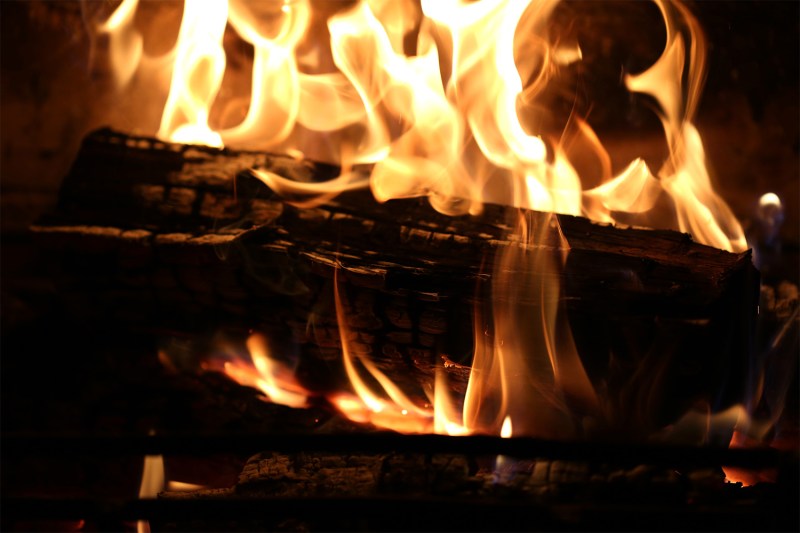
Sometimes a fire decides to just pop on up. You don’t need fancy power outlets and toaster ovens to risk burning your home and all your possessions: A simple candle, a cigar’s ash, or an ember drifting from the fireplace on a snowy winter eve will all do the trick nicely.
Wood Burning Fireplace Fire
Well, I mean there’s supposed to be a fire there, so don’t panic if you see one. If it’s getting out of hand, though, as in flames shooting out of the chimney or licking out over the hearth, you gotta put it out. First, try simply breaking it up: push logs apart and then spread ash over all embers. If that doesn’t work, go ahead and grab the extinguisher. Spray the retardant at the base of the flames and sweep back and forth, using the entire contents of the extinguisher (they’re not designed for multiple uses, FYI). If you must use water, prepare to extinguish the flames with a hose or bucketsful of the stuff, and then vacate the house: the smoke and the smell are going to be awful.
Drapes/Curtains
If your curtains or drapes catch fire, you need to get them off the wall and on the ground ASAP. You’ll have mere seconds. Then hit ’em with that spray-n’-sweep method using a fire extinguisher, or use water if need be. But also be ready to just get out.
And in fact, always be ready to just get out. When it comes to fighting the fire, prevention is always the best bet. If it’s too late for that and the flames are spreading, then quickly assess your potential to actually beat this thing, and always consider just grabbing the kids/wife/pets/roommate and getting your asses out of there.
(Also, call 9-1-1 in the event of every fire, even one you think you have successfully beaten. Always let the pros check.)



